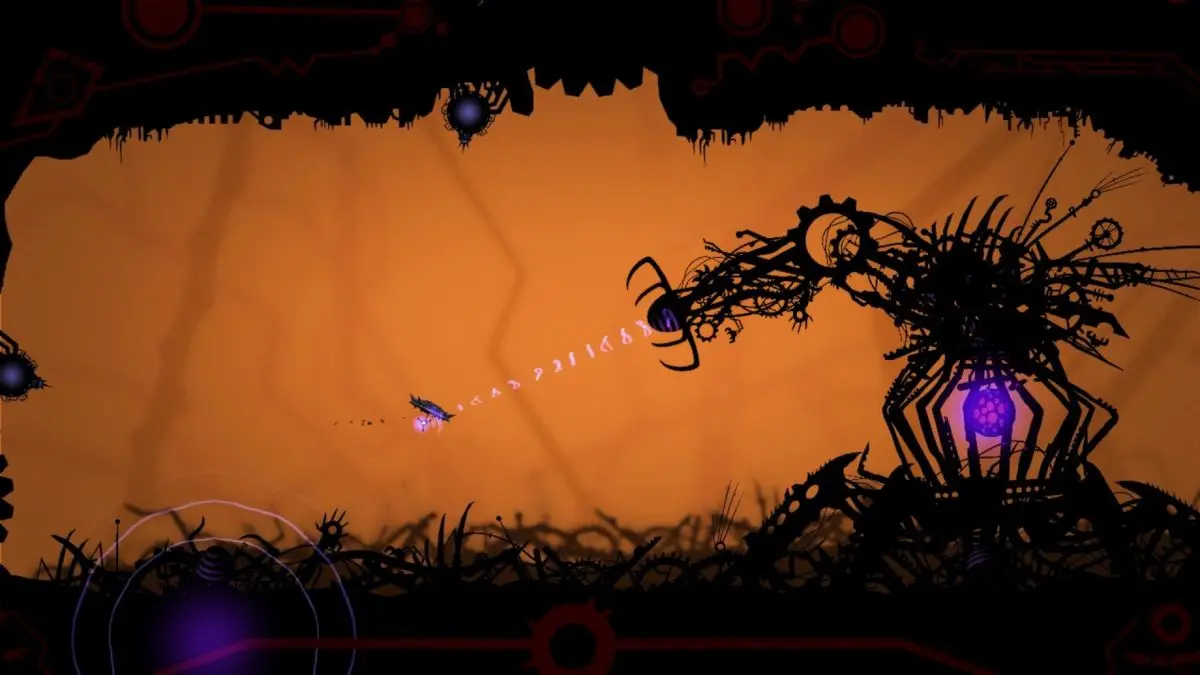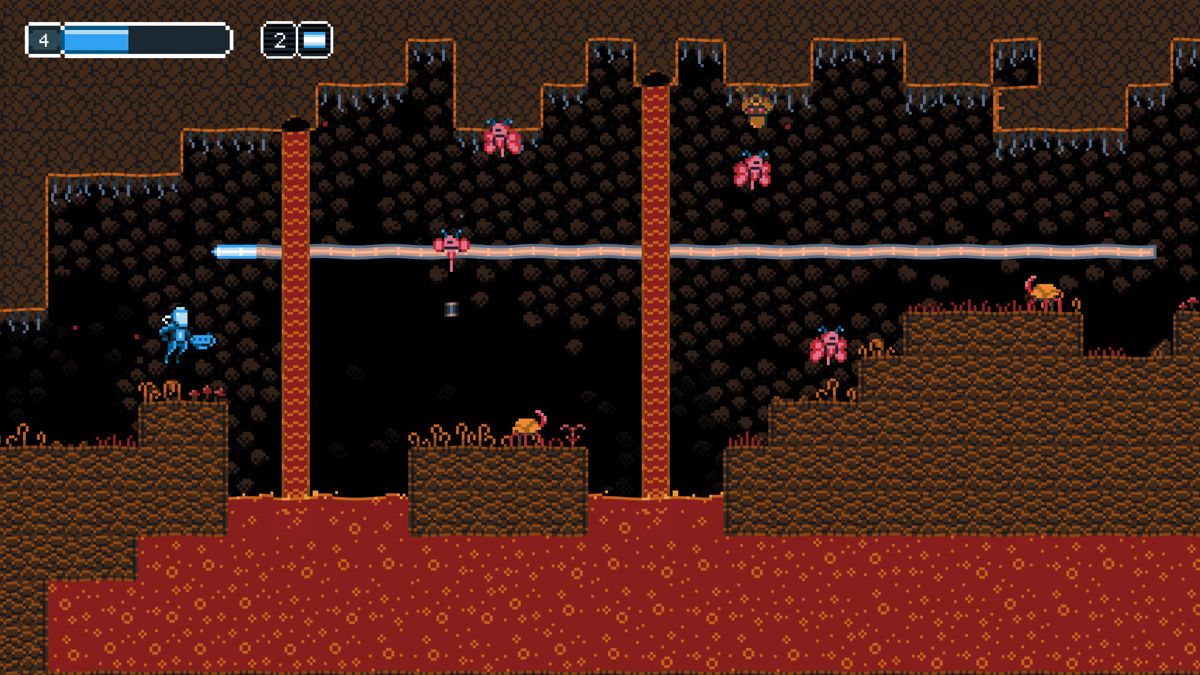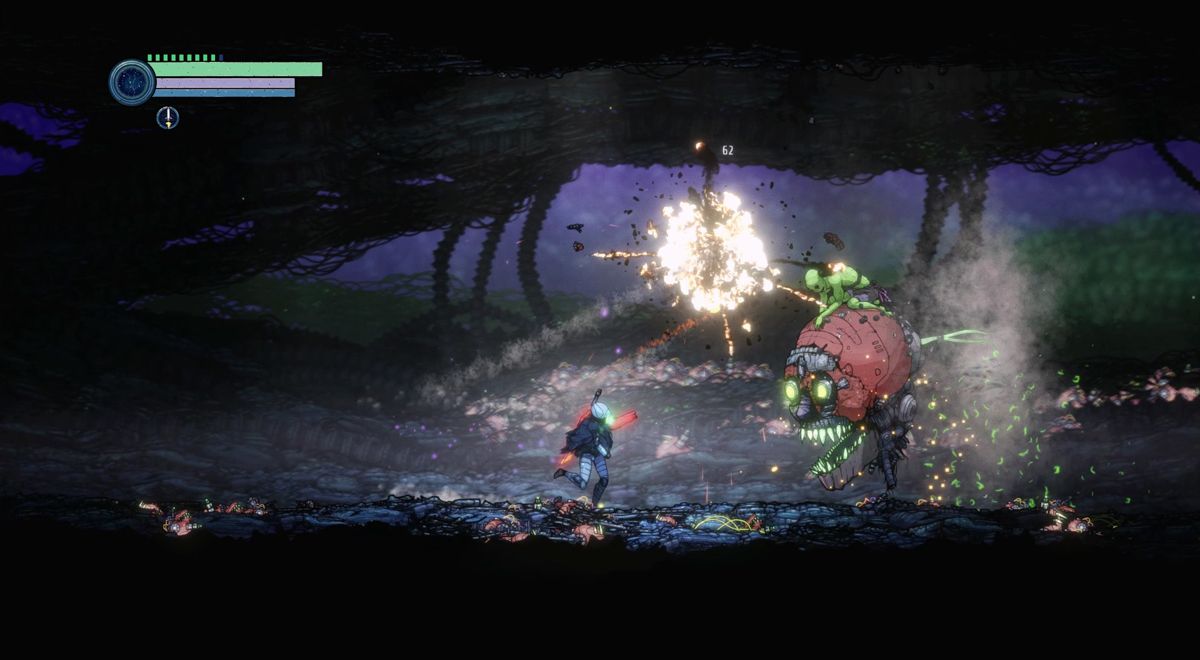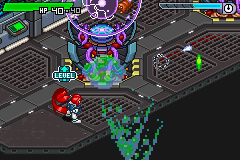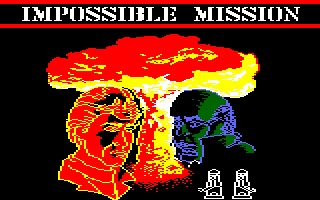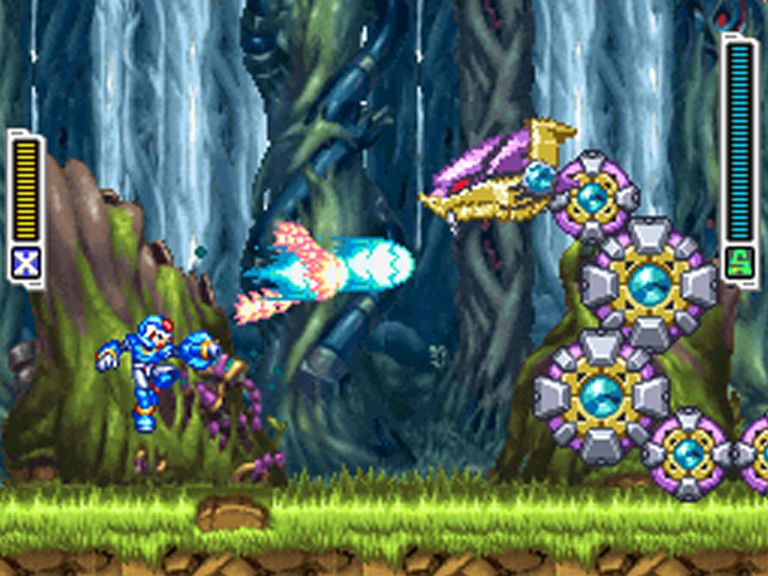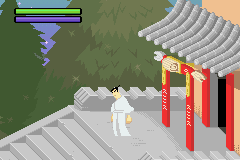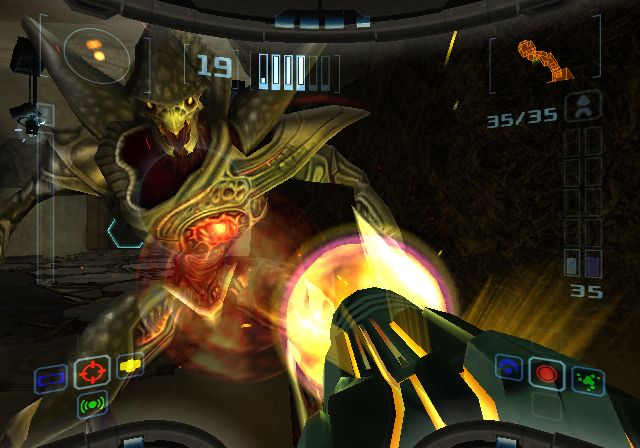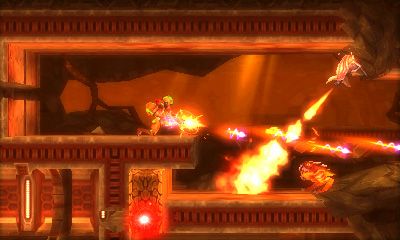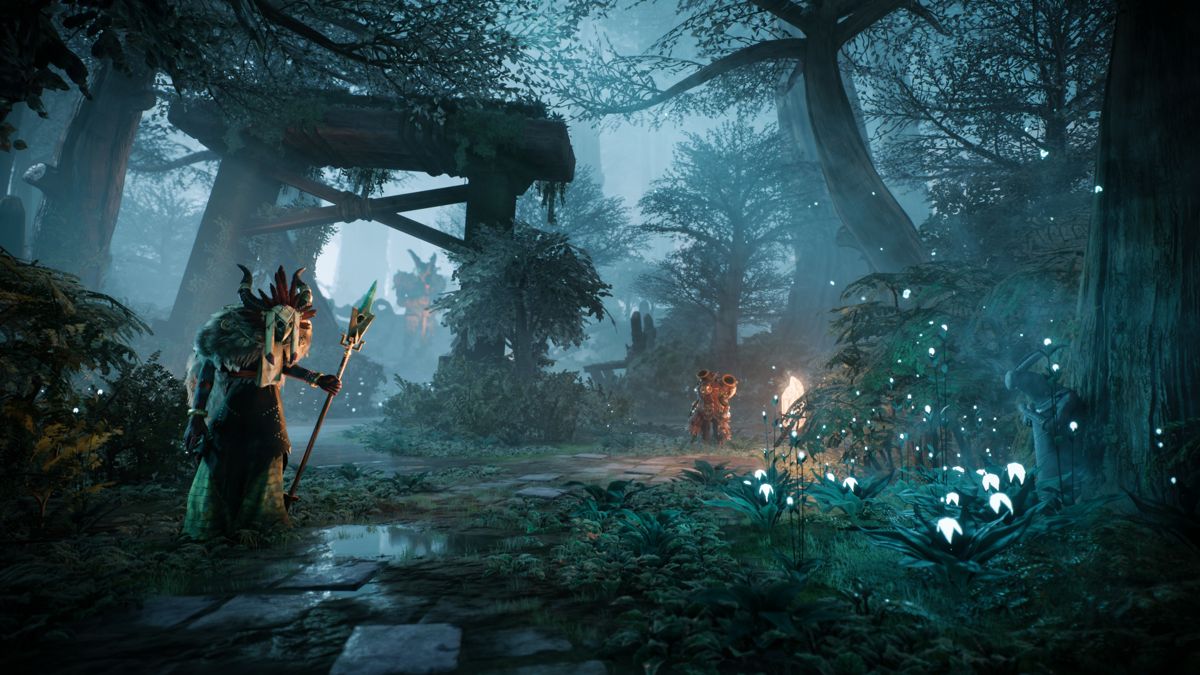Results
Insanely Twisted Shadow Planet
environmental puzzles, sci-fi, pixel art
Insanely Twisted Shadow Planet is a modern take on the classic shoot 'em up genre, developed by FuzzyEyes and published by Microsoft Studios. While it may appear simplistic at first glance, this game offers a unique and immersive experience that sets it apart from its contemporaries. One of the standout features of Insanely Twisted Shadow Planet is its distinctive art style. The game world is presented in a striking silhouette aesthetic, with intricate backdrops and enemy designs that are both visually stunning and unsettling. This approach creates a sense of mystery and foreboding, adding depth to the gameplay experience. Gameplay mechanics in Insanely Twisted Shadow Planet are not limited to traditional shoot 'em up elements. Players must navigate through intricate, maze-like levels, solving environmental puzzles and utilizing various power-ups and abilities to progress. This introduces a layer of exploration and problem-solving that complements the action sequences. One notable aspect of the game is its emphasis on narrative and storytelling. While the plot is conveyed through minimal text and visual cues, it manages to captivate players with its enigmatic and atmospheric presentation. The game's world is rich with details and lore, inviting players to uncover its secrets and piece together the underlying story. Insanely Twisted Shadow Planet also features a dynamic and reactive soundtrack that evolves alongside the gameplay. The music, composed by Steve Burke, adds an extra layer of tension and intrigue, seamlessly blending with the visuals to create an immersive and atmospheric experience. Overall, Insanely Twisted Shadow Planet offers a refreshing take on the shoot 'em up genre, combining engaging gameplay mechanics with a distinct visual style and a compelling narrative. Its attention to detail and innovative design elements make it a standout title for fans of the genre seeking a unique and memorable experience.
Escape from Thethys
sci-fi, pixel art, challenging
Escape from Thethys is a 2D metroidvania-style action-platformer released in 2018. The game is set on the underwater moon Thethys, where the player takes control of a deep-sea diver trying to escape a mysterious underwater facility. Key features of the game include: 1. Procedurally generated levels: While the overall structure of the game world remains consistent, the specific layouts of rooms and placement of items change with each playthrough, enhancing replayability. 2. Unique weapon system: The player's primary weapon is a harpoon gun that can be upgraded and modified throughout the game, allowing for various combat strategies and puzzle-solving approaches. 3. Environmental hazards: The underwater setting introduces challenges like pressure management and oxygen conservation, adding an extra layer of complexity to exploration. 4. Boss battles: The game features large-scale encounters with mutated sea creatures and advanced security systems. 5. Multiple endings: The player's choices and actions throughout the game can influence the final outcome, encouraging multiple playthroughs. 6. Retro-inspired visuals: The game uses a pixel art style reminiscent of 16-bit era games, but with modern lighting and particle effects to enhance the underwater atmosphere. 7. Nonlinear progression: While there is a main story path, players can often tackle areas in different orders, discovering alternate routes and secrets. 8. Limited resources: The game emphasizes resource management, with scarce ammunition and health pickups encouraging careful play. Escape from Thethys stands out in the metroidvania genre for its unique setting and the way it incorporates underwater survival elements into the traditional exploration and upgrade-based gameplay.
Ghost Song
igavania, sci-fi, challenging
Ghost Song is a Metroidvania-style game developed by Old Moon and published by Humble Games in 2022. Here are some key aspects of the game: 1. Setting: The game takes place on the desolate moon of Lorian, featuring a mysterious and atmospheric sci-fi environment with bio-mechanical elements. 2. Narrative: The story follows a female protagonist who awakens from a long slumber with no memory of her past. The narrative unfolds through environmental storytelling and interactions with other characters. 3. Combat system: Ghost Song features a unique blend of ranged and melee combat. The protagonist's arm cannon can be charged for more powerful shots, and there's a risk-reward system where players can sacrifice health for increased firepower. 4. Upgrade system: Rather than traditional experience points, the game uses a "Nanogel" system for upgrades. Players can choose to enhance either their health or weapon energy, creating a strategic element to character progression. 5. Sound design: The game features an atmospheric soundtrack that adapts to different areas and situations, enhancing the eerie and isolated feel of the moon. 6. Boss design: Bosses in Ghost Song are often large, intimidating creatures that require learning attack patterns and exploiting weaknesses to defeat. 7. Interconnected world: The map design features multiple paths and shortcuts, encouraging exploration and backtracking with new abilities. 8. Visual style: The game employs a hand-drawn art style with detailed backgrounds and character designs, mixing organic and mechanical elements. 9. Difficulty balance: Ghost Song aims for a challenging but fair difficulty curve, with save points strategically placed before difficult encounters. 10. Hidden lore: Much of the game's backstory and world-building is tucked away in optional areas and interactions, rewarding thorough exploration. Ghost Song stands out in the Metroidvania genre with its unique setting, atmospheric storytelling, and blend of combat styles, offering a fresh take on familiar gameplay mechanics.
Scurge: Hive
sci-fi, challenging, varied biomes
Scurge: Hive, released in 2006, is a third-person shooter game developed by Tragical and published by Kheops Studio. While it shares some standard elements with other games in the action-horror genre, Scurge: Hive sets itself apart with its distinct atmosphere and gameplay mechanics. The game takes place in a dystopian, post-apocalyptic world overrun by a mysterious alien infestation known as the "Hive." The player assumes the role of a mercenary tasked with navigating through this hostile environment, battling against hordes of grotesque, mutated creatures. One of the standout features of Scurge: Hive is its emphasis on ammo and resource management. Ammunition is scarce, forcing players to carefully plan their attacks and prioritize headshots for maximum efficiency. Additionally, the game introduces a unique "nano-forge" system, which allows players to craft and upgrade their weapons using materials scavenged from the environment. The game's level design is noteworthy, with intricate and interconnected environments that encourage exploration and backtracking. Players must navigate through claustrophobic corridors, dilapidated buildings, and underground tunnels, all while fending off relentless enemy attacks from multiple angles. Scurge: Hive's combat mechanics are intense and unforgiving. Enemies exhibit intelligent behavior, often flanking or overwhelming the player with sheer numbers. The game also features a dynamic damage system, where different body parts can be targeted and dismembered, adding a brutal layer of realism to the combat. While the game's graphics may have aged, the atmospheric design and sound design still hold up remarkably well. The eerie, industrial soundscape and unsettling ambient noises contribute to the game's overall sense of dread and tension. Despite its niche status, Scurge: Hive has garnered a dedicated cult following among fans of the action-horror genre, particularly those who appreciate its challenging gameplay, resource management elements, and uncompromising difficulty.
Impossible Mission
environmental puzzles, sci-fi, challenging
Impossible Mission, released in 1984 for various home computer platforms, was a groundbreaking game that combined elements of platforming, puzzle-solving, and stealth gameplay. Developed by Dennis Casswell and published by Epyx, it stood out for its innovative blend of genres and its distinctive visual style. The game's premise revolved around a secret agent tasked with infiltrating a highly secure underground complex to prevent a renegade artificial intelligence from launching a series of nuclear missiles. The player had to navigate through a maze-like series of rooms, each with its own unique challenges and obstacles. Puzzle elements played a significant role in Impossible Mission, as players had to solve various logic puzzles and manipulate objects to progress through the levels. This included tasks such as rearranging tiles, navigating mazes, and deciphering codes. The game has a notable randomization element, though it lacks ability gating, one of the staples of a metroidvania game. Stealth mechanics were also a crucial aspect of the gameplay. Players had to avoid patrolling robots and security systems, often by carefully timing their movements or using distractions. Getting caught or making too much noise would trigger alarms and potentially lead to a game over. The game's difficulty level was notoriously high, with intricate puzzles and unforgiving gameplay mechanics that challenged even experienced players. The limited time limit and the necessity to conserve resources added to the tension and strategic depth. Despite its age, Impossible Mission is still regarded as a classic in the annals of gaming history, praised for its innovative design, challenging gameplay, and unique visual style. Its influence can be seen in many modern games that blend multiple genres and incorporate puzzle-solving elements.
Mega Man ZX
sci-fi, pixel art, challenging
Mega Man ZX, released in 2006 for the Nintendo DS, is a departure from the traditional Mega Man formula while still retaining the core gameplay elements that fans of the series have come to love. Set in a post-apocalyptic world, the game introduces a new protagonist named Vent (or Aile in the case of the female counterpart) who possesses the ability to merge with Cyber-Elves and Biometals, granting them unique abilities and transformations. One of the standout features of Mega Man ZX is its mission-based structure, which allows players to tackle levels in a non-linear fashion, adding a degree of freedom and replayability. The game also incorporates elements of exploration and backtracking, encouraging players to revisit previous areas with newly acquired abilities to uncover hidden secrets and pathways. The game's combat system is robust, with the ability to switch between different Biometal forms mid-battle, each with its own unique set of abilities and weapons. This adds depth to the combat mechanics and encourages players to strategize and adapt their playstyle to different enemy encounters. Mega Man ZX also features a robust online multiplayer component, allowing players to engage in cooperative and competitive modes, adding longevity to the game's overall experience. The game's visual style is a departure from the traditional 8-bit and 16-bit aesthetics of previous Mega Man games, opting for a more modern and detailed 3D cel-shaded look, while still retaining the iconic character designs and enemy sprites that fans have come to recognize. Overall, Mega Man ZX successfully blends classic Mega Man gameplay with fresh mechanics and an engaging narrative, offering a refreshing take on the long-running franchise while still staying true to its roots.
Samurai Jack: The Amulet of Time
fantasy, pixel art, post-apocalyptic
Samurai Jack: The Amulet of Time for the Game Boy Advance was a side-scrolling action-adventure platformer based on the acclaimed Cartoon Network animated series. While adhering to the show's distinct visual style and overall aesthetic, the game offered a unique storyline that served as an extension of the series' narrative. One of the standout features was the game's implementation of time travel mechanics. Players could manipulate the flow of time, allowing Jack to traverse between different eras, each with its own distinct environmental hazards and enemy types. This added a layer of complexity to the gameplay, as players had to adapt their strategies and combat techniques to suit the specific time period. The combat system was relatively straightforward but offered a satisfying level of depth. Jack could perform various combos and special attacks, drawing inspiration from his signature sword-fighting style in the show. Additionally, the game incorporated light puzzle-solving elements, often requiring players to manipulate objects or interact with the environment in specific ways to progress. While the game followed a linear progression, it featured multiple paths and secrets that encouraged exploration. Uncovering these hidden areas and collectibles not only rewarded players with power-ups and upgrades but also provided additional insights into the game's lore and backstory. Notably, the game's soundtrack was a highlight, capturing the essence of the show's iconic music and adding to the overall immersive experience. The sound design and voice acting were also commendable, with the original voice cast reprising their roles, further enhancing the game's authenticity. Overall, Samurai Jack: The Amulet of Time was a faithful adaptation that successfully translated the beloved animated series into an engaging and challenging handheld gaming experience, catering to both fans of the show and action-platformer enthusiasts alike.
Metroid Prime 2: Echoes
shooter, sci-fi, challenging
Metroid Prime 2: Echoes, released in 2004 for the Nintendo GameCube, is a first-person adventure game that builds upon its predecessor while introducing several unique elements: 1. Dual-world mechanics: The game features Light and Dark versions of the planet Aether, with players switching between dimensions to solve puzzles and progress. 2. Beam system: Unlike the first Metroid Prime, beams don't stack. Instead, players must switch between four distinct beams (Power, Dark, Light, and Annihilator) for combat and puzzle-solving. 3. Ammunition: Dark and Light beams use limited ammo, adding a resource management aspect to combat. 4. Enhanced scanning: The scan visor now includes a zoom function for distant objects and provides more lore through Luminoth and Space Pirate logs. 5. Increased difficulty: Generally considered more challenging than its predecessor, with tougher bosses and environmental hazards. 6. Multiplayer mode: A first for the series, featuring deathmatch-style combat for up to four players. 7. Dark Samus: Introduces a new antagonist, a corrupted Phazon-based doppelganger of Samus. 8. Suits: Features the Dark Suit and Light Suit, which provide protection against dimensional hazards. 9. New abilities: Introduces the Screw Attack, Sonic Boom, and Echo Visor. 10. Atmosphere: Emphasizes isolation and a darker tone compared to the first Metroid Prime. The game's unique dimension-shifting mechanics and challenging gameplay make it stand out within the Metroid Prime trilogy.
Metroid: Samus Returns
sci-fi, environmental puzzles, challenging
Metroid: Samus Returns is a critically acclaimed reimagining and remake of the 1991 Game Boy classic Metroid II: Return of Samus, developed by MercurySteam and Nintendo for the Nintendo 3DS. Here are some key details about the game: Gameplay and Mechanics: - Retains the 2D side-scrolling exploration and combat of classic Metroid games, but with updated mechanics and controls. - Introduces the "Melee Counter" system, allowing Samus to counterattack enemies by precisely timing her melee strikes. - Incorporates free-aim mode, allowing Samus to aim her arm cannon in any direction while standing still. - Features a revised map system with a separate map screen and the ability to place markers. Level Design and Environments: - Takes place on the planet SR388, the setting of the original Metroid II. - Reimagines and expands upon the game's environments, adding new areas and intricate level designs. - Incorporates various biomes, from lush jungle regions to treacherous caverns and depths. - Features meticulously crafted 2.5D graphics, with detailed backgrounds and foregrounds. Narrative and Storytelling: - Retells the story of Samus' mission to exterminate the Metroid species on SR388. - Expands on the narrative through cutscenes and environmental storytelling. - Introduces new AI entities, such as the Metroid-scanning robots, that shed light on the planet's history. Overall, Metroid: Samus Returns aimed to recapture the essence of classic Metroid gameplay while introducing modern refinements and enhancements, resulting in a well-received and critically acclaimed addition to the long-running series.
Remnant: From the Ashes
shooter, sci-fi, challenging
Remnant: From the Ashes is a third-person survival action shooter developed by Gunfire Games and published by Perfect World Entertainment. Released in 2019, it combines elements of soulslike games with roguelike procedural generation and cooperative multiplayer. As a seasoned player of the genre, you'll recognize the challenging combat and dodge-roll mechanics reminiscent of Dark Souls, but with a focus on ranged combat. The game features procedurally generated levels and enemy encounters, ensuring a unique experience with each playthrough. Key features include: 1. Dynamically generated worlds with randomized quests, enemies, and loot 2. Cooperative multiplayer for up to three players 3. A diverse array of weapons and gear to customize your playstyle 4. Boss fights that require strategy and skill to overcome 5. A post-apocalyptic setting with multiple realms to explore The game's narrative revolves around humanity's struggle against an interdimensional evil called the Root. Players take on the role of a customizable survivor tasked with traveling through portal-like World Stones to various realms, battling enemies and gathering resources to upgrade their equipment. Remnant: From the Ashes stands out in the genre by combining the challenging combat of soulslikes with the replayability of roguelikes and the satisfaction of loot-based progression systems. Its emphasis on ranged combat and cooperative play offers a fresh take on the formula established by games like Dark Souls and Bloodborne.
Filters
Search Term
Properties
Platforms
Tags (include)
Tags (exclude)
Get Your Game Noticed
Advertise your game with MetroidvaniaDB and reach a community of people who know exactly what they're looking for:
Your game.
Native & Banner Ad Spots
Multi-week Discounts
Game Launch Packages
Discounts for Indie Developers

